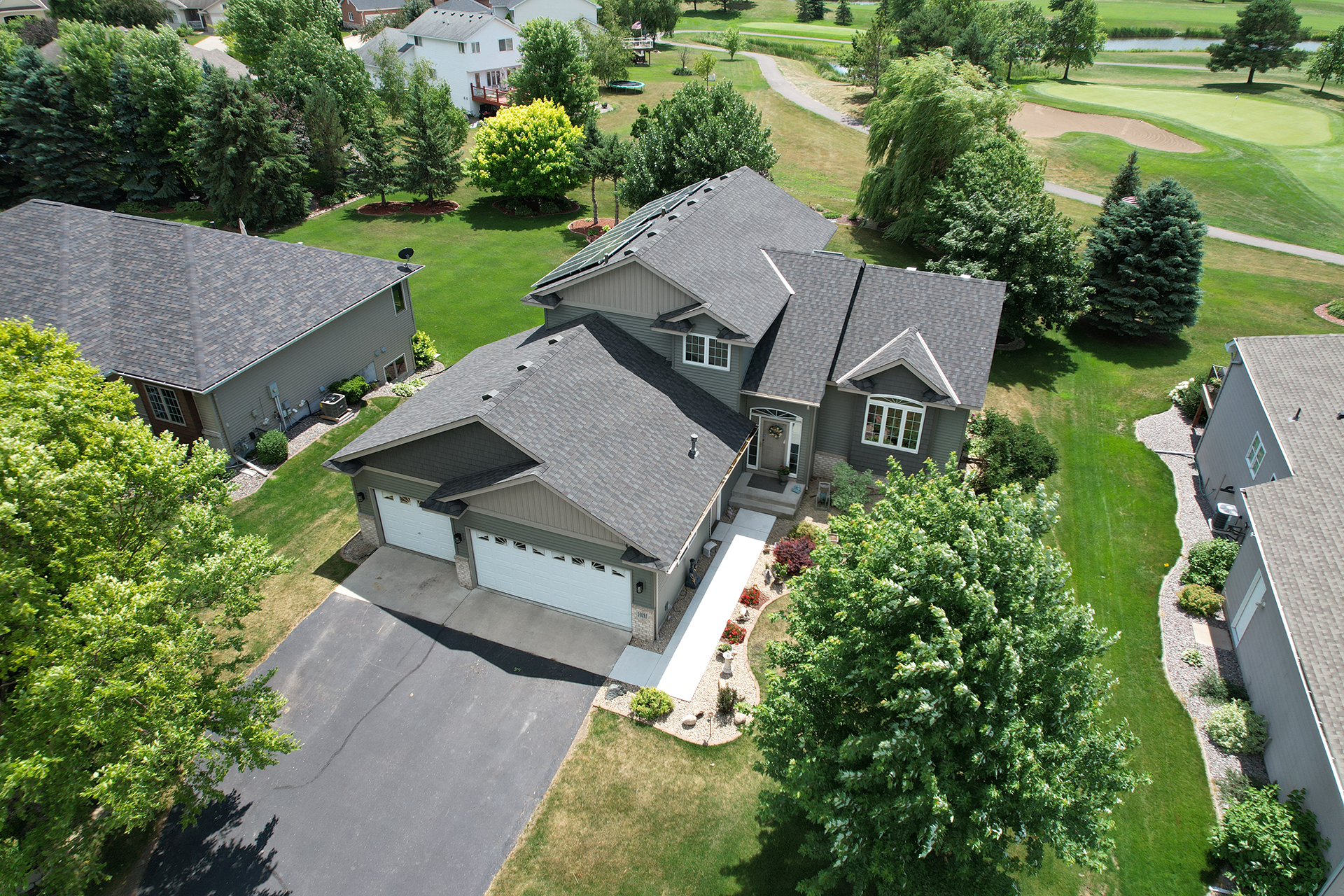Roofing Reality Check: The Hidden Impact of Asphalt Shingles
Uncovering the Environmental Side Effects of Your Roofing Choices
- By Super Siders
- Asphalt Roofing, Metal Roofing
Let’s talk about something often overlooked – your roof. Turns out, the shingles you pick can have a bigger impact on the environment than you’d imagine. We’re about to unravel the truth about asphalt shingles and why it’s worth a second thought.

The Downside of Asphalt Shingles:
You’ve likely noticed countless homes with asphalt shingles – the most prevalent roofing type, used in over 80% of home roofing projects in the United States. They offer affordability, require minimal maintenance, and are relatively easy to install. However, the catch emerges when they wear out every 12-15 years, leading to a staggering 20 billion pounds discarded annually in U.S. landfills. On top of that, they take up to 500 years to break down, releasing harmful substances into the air and soil until they are gone. It’s like a time bomb of environmental impact ticking away on your roof.
The scale of this issue is truly staggering; the 12 million tons of asphalt shingles dumped into landfills annually contribute significantly to environmental degradation. These shingles contain harmful substances that, over time, leach into the soil and water, posing a threat to ecosystems. The long decomposition period of up to 500 years means we’re leaving behind a legacy of pollution that will affect generations to come.
Broken Promises and the Temptation of Cheap:
Over the years, policies have been implemented to curb roofing companies’ improper waste disposal practices. However, the unfortunate truth remains – many companies fail to follow through, and avoid consequences for their actions. This reality places the responsibility squarely on the consumer’s shoulders. The decision to opt for a more sustainable roofing material becomes a pivotal factor in shaping a more environmentally conscious future. While the allure of a quick and cheap roofing option is understandable, the cumulative effect of broken promises leads to a burgeoning environmental crisis. The true cost hidden behind those tempting low price tags are the severe environmental consequences, emphasizing the necessity to consider the long-term impact on our planet.
As these promises of proper waste management go unfulfilled, non-recycled shingles continue to accumulate, contributing not only to the alarming 4.2% of the market ending up in landfills each year but also forewarning a future where financial penalties escalate for those perpetuating the growing landfill problem. This dual threat underscores the immediate need for a proactive approach toward sustainable roofing alternatives. This will greatly mitigate both environmental and financial repercussions.
A Permanent Solution:
Now, here’s the good news – there’s a solution: metal roofing. Sure, it might seem a bit pricier upfront, but think of it as an investment. Metal roofing is built to last, with a longevity up to 50 years or more, and they’re 100% recyclable, so forget ever contributing to those massive landfill piles! They’re lighter, save energy, and can even be installed right over your old shingles, cutting down on waste. So, while the initial cost may be a bit more, the longevity and eco-friendliness of metal roofing make it a smarter choice in the grand scheme of things.
Metal roofing is the beacon of hope in the face of the asphalt shingle crisis. Its durability not only ensures a longer lifespan but also eliminates the need for frequent replacements, significantly reducing the environmental impact. The 100% recyclability of metal roofing provides a closed-loop system, preventing the accumulation of roofing waste in landfills. Choosing metal over asphalt becomes not just a financial decision but a conscious effort towards a sustainable and responsible future.
Environmental Impact by the Numbers:
Consider this – every 2.25 tons of asphalt shingles equal 20 cubic yards of waste, and with 12 million tons discarded annually, it’s the equivalent of filling Yankee Stadium 4.24 times. The resulting 106,666,666 cubic yards of waste also translates to 319,999,998 cubic feet, filling 185.2 football fields up to the goal post. This alarming amount contributes to the 4.2% of the market ending up in landfills each year, adding approximately 112,155 tons monthly.
The sheer volume of waste generated by asphalt shingles is mind-boggling. The continuous addition of 283,560,000 tons of asphalt roofing to the market, with a significant portion ending up in landfills, highlights the urgency for a shift in our roofing choices. Every 7 seconds, another asphalt roof is added to a landfill, emphasizing the need to break free from this unsustainable cycle.
Make the Green Decision
Your roof choices matter more than you might realize. It’s easy to go with the quick and cheap option like asphalt, but in the long run, it might not be the best choice. The seemingly low cost can accumulate into a high environmental toll. Consider the longevity and eco-friendliness of metal roofing as a smarter alternative for a sustainable future.
Thinking about a roofing choice that’s good for your home and the planet? Consider metal roofing – a simple and eco-friendly solution. It’s time to make a change, and we’ve got a straightforward option that could be just what you’re looking for.
References:
https://cornettroofing.com/the-environmental-cost-of-asphalt-shingles/
https://cericade.com/asphalt-shingles-impact-on-the-environment/
















